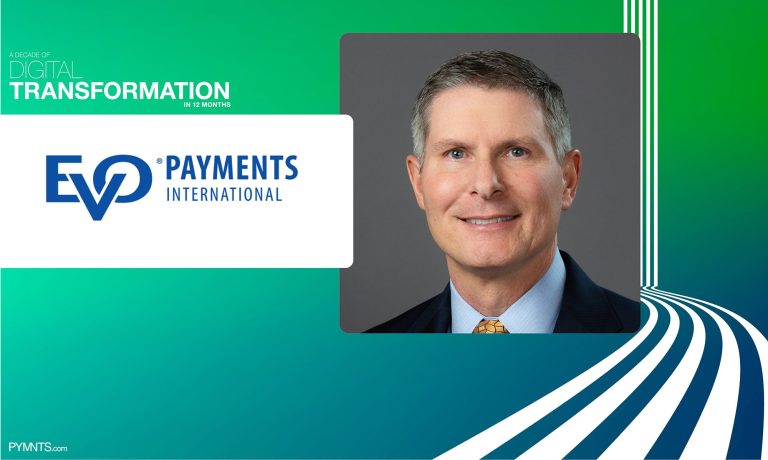
In A Decade of Digital Transformation in 12 Months, 46 C-suite executives spoke with PYMNTS for its Q2 eBook on what the world will look like as recovery rolls on and the next iteration of normal rolls out. In this excerpt, Tom Panther, CFO of EVO Payments, explores the substantial benefits of adopting digital payment strategies well beyond the pandemic.
Read the entire eBook here.
The pandemic has made lasting impacts on our world and business as we know it. While some adaptations, like wearing face masks in public, were brand-new for most of us, others were expedited by the need to change overnight. When it comes to pre-2020 commerce, the world was already exploring different methods of conducting business. eCommerce has grown within the last decade, and customers have already been introduced to concepts like self-checkout counters, online payment portals and contactless payments. The pandemic simply transformed these conveniences into necessities.
Companies that had already taken the leap of faith into the digital commerce world were better equipped to conduct business post-March 2020. Those who had not chosen to embrace digital payments and electronic payment acceptance were pressured to quickly adapt in order to survive. What was once an option became an obligation, as companies were tasked with figuring out how to run an entire organization from within their employees’ homes.
The Benefits of Change
In 2020, companies who were apprehensive about restructuring their payment acceptance processes were finally exposed to the benefits of electronic billing and digital payments, which include increased speed, security and convenience. Companies are seeing faster collection times and decreased days sales outstanding (DSO) averages – which were especially helpful in the last year, when the future of the economy was uncertain and companies were left with less cash on hand.
Once the initial leap to a digital payments strategy is made, it is unlikely that companies will revert to the more manual, paper-based methods due to the ROI of digital payments. In fact, EVO Payments has seen its merchants expand their digital payment offerings even further — accepting additional payment methods and adopting self-service payment technology — once they realized the positive impact it had on cash flow, customer satisfaction and process efficiency.
As a CFO, I understand the hesitation that companies may have about making major changes to their collections process. Revenue is the heart line for companies, so any risk of upsetting the current flow, which is technically working, is often avoided.
However, working for EVO, I also recognize the substantial benefits of adopting digital payment strategies. And as a payments company, we are committed to helping merchants expand their company’s growth through a digital payments strategy that will enhance their performance for years to come.
What the Future Holds
I am certainly looking forward to embracing the day when in-person interactions are normalized again, but I believe that contactless payments and electronic payment acceptance are here to stay. Even when the last face mask is removed, consumers will still be asking for flexibility and choices when it comes to how they make purchases with their vendors. Cash and checks will still have a place in the “payments economy,” but to a much lesser degree, as digital payments replace these legacy forms of paying for goods and services.